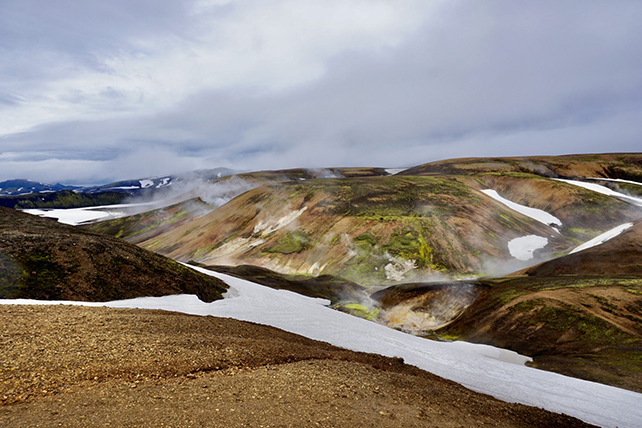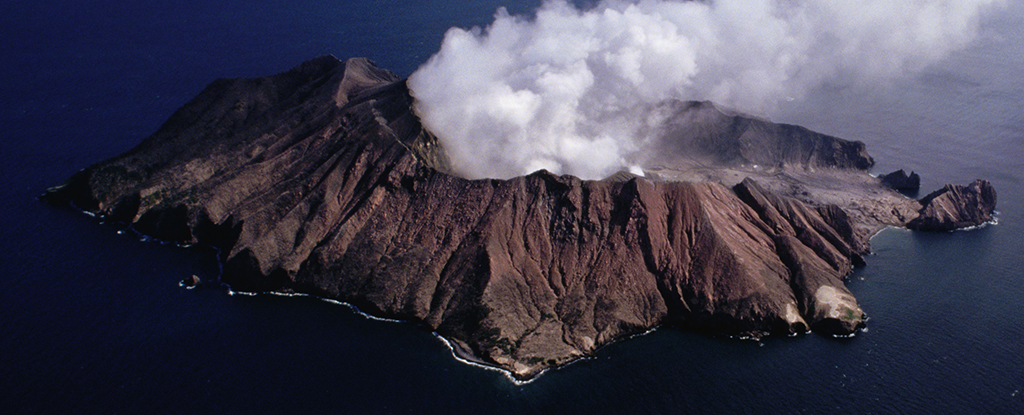Products You May Like
We know volcanoes can cause dramatic shifts in the atmosphere when they erupt, but what about those long stretches of time when they appear to have fallen silent?
A new study suggests that dormant volcanoes could be leaking out much more sulfur than we thought.
In fact, we might have underestimated sulfur output from sleeping volcanoes by a factor of three. That could mean a recalibration of climate and air quality models, as sulfur is one of the most important elements in terms of providing a climate cooling effect.
These findings are based on tiny particles trapped in layers of an ice core extracted from central Greenland, showing the make-up of the atmosphere circulating above the Arctic between the years 1200 and 1850. Sulfur emissions from dormant volcanoes were much higher than expected.
“We found that on longer timescales the amount of sulfate aerosols released during passive degassing is much higher than during eruptions,” says atmospheric scientist Ursula Jongebloed, from the University of Washington.
“Passive degassing releases at least 10 times more sulfur into the atmosphere, on decadal timescales, than eruptions, and it could be as much as 30 times more.”
The original aim of the research was to look at the amount of sulfur marine phytoplankton adds to the atmosphere through compounds they release as they grow. Phytoplankton were thought to be the main source of sulfur emission before humans came along. But the contributions from volcanoes – indicated through isotope measurements – stopped the scientists in their tracks.
Volcanoes might be twice as important as marine phytoplankton when it comes to producing sulfur, the researchers suggest, even when they’re not actively erupting. The plumes of gas leaking out of dormant volcanoes aren’t picked up on satellite imagery, which may be why their contribution has been underestimated so far.

At the same time, if natural sulfur sources are higher, then we may have been overestimating the cooling effect sulfur pollutants from industry have had on temperature, perhaps by as much as half. This could explain why the Arctic is warming faster than expected – the starting aerosol level is higher than we thought.
“We don’t know what the natural, pristine atmosphere looks like, in terms of aerosols,” says atmospheric scientist Becky Alexander, from the University of Washington. “Knowing that is a first step to better understanding how humans have influenced our atmosphere.”
Aerosols don’t travel far and don’t last all that long either, further complicating calculations about how this effect might be seen elsewhere – although the researchers are confident their findings, based on measures in the Arctic, will apply to emissions from volcanoes across the world.
Understanding fluctuations in sulfur suspended over our heads is critical in being able to model the balance of heat trapped by our atmosphere and energy reflected back out into space. Aerosol particles can block solar radiation, which is where the cooling effect comes from, but it’s a very complex picture. For instance, scientists only just realized this year how dust plumes have been masking the full extent of global heating.
Further research should tell us more about aerosols’ influence on global climate. The team behind the new study suspects that the ‘missing’ emissions that have previously gone undetected are could include compounds other than sulfur dioxide, such as hydrogen sulfide (H2S), but additional work will be required to know for sure.
“It’s not good news or bad news for climate,” says Jongebloed. “But if we want to understand how much the climate will warm in the future, it helps to have better estimates for aerosols.”
The research has been published in Geophysical Research Letters.
